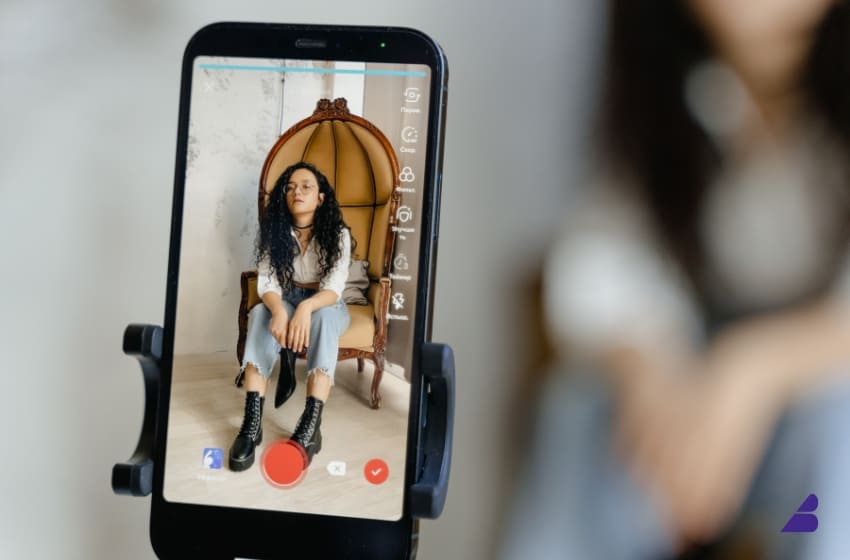
For years, big brands relied on celebrity endorsements to drive sales and build trust. But in today’s digital-first world, a new wave of influencers is taking over—micro-influencers. These everyday content creators, with anywhere between 10,000 to 100,000 followers, are proving to be more authentic, engaging, and cost-effective than traditional celebrity endorsements.
So why are brands shifting their marketing budgets toward micro-influencers instead of celebrities? Let’s dive in.
1. What Are Micro-Influencers?
Micro-influencers are content creators who have smaller but highly engaged followings in specific niches. Unlike celebrities, they don’t have millions of followers—but that’s precisely what makes them more relatable and trustworthy.
🔹 Follower Range: 10,000 – 100,000
🔹 Specialty: Niche expertise in beauty, fitness, travel, tech, fashion, finance, etc.
🔹 Engagement Rate: Higher than celebrities and macro-influencers
🔹 Platform Focus: Instagram, YouTube, TikTok, LinkedIn, Twitter, Blogs
💡 Example: A fitness brand collaborates with a micro-influencer in the CrossFit community rather than a Hollywood celebrity. The audience is more targeted, engaged, and likely to convert.
2. Why Are Brands Choosing Micro-Influencers Over Celebrities?
✅ 1. Higher Engagement & Trust
Micro-influencers have a closer connection with their followers. They interact personally through comments, DMs, and Q&As, making them feel more authentic than a scripted celebrity endorsement.
📊 Stat: Micro-influencers have a 60% higher engagement rate than celebrities.
💡 Example: A beauty influencer with 25,000 Instagram followers gets more interaction on a skincare post than a celebrity with 10 million followers.
✅ 2. Niche Targeting = Higher Conversions
Micro-influencers cater to specific audiences—whether it’s vegan food lovers, sneakerheads, or sustainable fashion enthusiasts. Brands get laser-focused reach, leading to higher conversions.
📊 Stat: 82% of consumers say they are more likely to buy a product recommended by a micro-influencer.
💡 Example: A tech brand promoting a new smartwatch will see better results working with a niche fitness vlogger rather than a general celebrity.
✅ 3. Cost-Effective vs. Celebrity Endorsements
Celebrity collaborations can cost millions of dollars per campaign. Meanwhile, micro-influencers charge a fraction of the price while delivering better engagement and ROI.
💰 Cost Comparison:
- Celebrity Endorsement (e.g., Cristiano Ronaldo): $500,000+ per Instagram post
- Micro-Influencer (e.g., fitness creator with 50K followers): $250 – $1,500 per post
💡 Example: A small fashion brand can partner with 10 micro-influencers instead of paying for one A-list celebrity, reaching multiple niche audiences.
✅ 4. Authenticity Over ‘Forced’ Promotion
Consumers today are skeptical of overly polished celebrity endorsements. They want real, honest opinions. Micro-influencers build credibility by sharing genuine reviews, making their promotions feel natural.
📊 Stat: 92% of consumers trust a micro-influencer recommendation over a celebrity ad.
💡 Example: A travel blogger sharing a personal experience at a boutique hotel comes across as more genuine than a celebrity reading a scripted ad.
✅ 5. Better for Social Media Algorithms
Instagram, TikTok, and YouTube favor high-engagement content. Since micro-influencers generate more interactions, their posts perform better in algorithms, getting more organic reach for brands.
📊 Stat: Micro-influencer posts get 3x more engagement than celebrity posts.
💡 Example: A micro-influencer reviewing a new phone gets more reach than a celebrity posting a generic “sponsored” message.
3. Real-World Examples of Brands Using Micro-Influencers
🚀 🔹 Glossier’s Growth via Micro-Influencers
Beauty brand Glossier skipped celebrity endorsements and relied on real users and micro-influencers to promote its products. Today, it’s a $1 billion brand.
🚀 🔹 Gymshark’s Fitness Micro-Influencer Network
Gymshark partnered with small fitness influencers instead of big-name athletes. The result? A global fitness movement and millions in sales.
🚀 🔹 Airbnb’s Local Storytelling Approach
Instead of A-list celebrities, Airbnb uses travel micro-influencers to share real-life experiences. This strategy builds trust and drives bookings.
4. How to Choose the Right Micro-Influencer for Your Brand
Want to start leveraging micro-influencers? Here’s how:
🎯 Step 1: Define Your Niche
Identify your target audience and what type of influencers they follow.
✔ Beauty, fashion, tech, gaming, fitness, finance?
✔ Instagram, TikTok, YouTube, Twitter, or blogs?
🎯 Step 2: Look for Engagement, Not Just Followers
A micro-influencer with 20K followers and 5% engagement is better than one with 100K followers and low engagement.
✔ Check likes, comments, shares, and story views.
🎯 Step 3: Prioritize Authenticity & Content Quality
Look for influencers who create genuine, high-quality content that aligns with your brand values.
✔ Are they already using similar products?
✔ Do their followers trust their recommendations?
🎯 Step 4: Collaborate Creatively
Instead of basic sponsored posts, try:
✔ Giveaways & contests
✔ Behind-the-scenes product demos
✔ Unboxing & review videos
✔ Exclusive discount codes
5. The Future of Micro-Influencer Marketing
As ad fatigue grows and consumers demand real connections, micro-influencers will continue to dominate. Here’s what’s next:
✅ AI-powered influencer selection (brands using data to find the best influencers)
✅ Live shopping & influencer commerce (TikTok & Instagram Shop takeovers)
✅ Long-term brand partnerships (instead of one-off sponsored posts)
✅ Nano-influencers (1K–10K followers) gaining more traction
🚀 Big brands like Nike, Coca-Cola, and Apple are already shifting their budgets towards micro-influencers. Is your brand ready to do the same?
Final Thoughts: The Power of Micro-Influencers
🔹 More trust. Less ‘celebrity fakeness,’ more authenticity.
🔹 More engagement. Higher interaction rates than A-list stars.
🔹 More cost-effective. Get better results for a fraction of the cost.
🔹 More targeted. Niche audiences = higher conversion rates.
👉 If you’re looking to grow your brand in 2025, it’s time to ditch overpriced celebrity deals and start leveraging micro-influencers. 🚀




